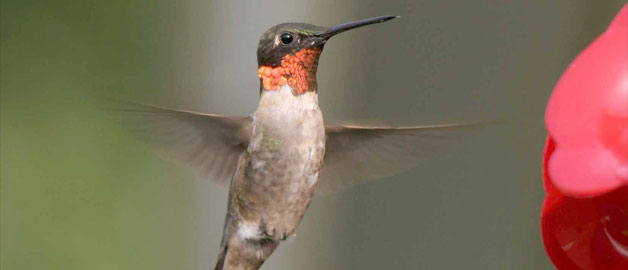Flutter Tonguing – The Sexy Sax Secret

If your aim is to underscore the sound of a cool cat puttin’ on the moves circa 1958, you’re probably going to want to learn to flutter tongue.
For those of you who have no idea what I’m talking about, flutter tonguing is basically a sound effect, or dare I say, gimmick used by saxophone players to create a raspy, growling sound. However, unlike the standard saxophone growl which involves basically vocally growling or singing into the horn, this more challenging form of rasp-a-delia involves the tongue.
I wouldn’t consider it an absolutely essential skill for many of us, but if you’re looking to be one of the saxfolk who is versatile enough to play just about any style and possibly even do session work, then I would say that flutter tonguing is indeed very important.
To hear what it is I’m talking about, check out these two examples:
(listen at 0:13 and 0:17)
(flutter tonguing applied throughout)
How’d You Do It?
In a nutshell, flutter tonguing is moving the tongue to create a “trrrrrr” sound as though you were imitating the sound of a jackhammer, a machine gun, or a cat purring. If you’ve ever spoken Spanish or French, you’ll know that pronouncing the “r” sound for words such as “por favor” and “fromage” is done using the back of the tongue. However, in flutter tonguing you’re using the front of the tongue.
To get started, it’s really important that you try this without the saxophone first. Practice blowing lightly while at the same time raising your tongue towards the roof of your mouth, just behind the top teeth. There’s no need to press the tongue into the roof of the mouth. Simply allow the air to cause a “flutter” between the tip of the tongue and the roof.
The next step is to try this using only the mouthpiece and the neck of the saxophone. I’ve personally found it easier to start this way, since getting air to pass by a fluttering tongue is easier if it has a shorter distance to travel. Remember, at no point during flutter tonguing does the tongue make contact with the reed or mouthpiece. In fact, this will stop the sound dead in its tracks. Instead, you’re letting the air pass through the fluttering, thereby creating the sound effect.
What Helped Me
Flutter tonguing is not something that’s come easily to me, and truth be told I still struggle with it quite a bit. However, I did find a few techniques, which technically “correct” or not helped me:
- Blowing really hard to get the air through the mouthpiece
I don’t think that this is a good permanent solution, but it did help me get started as that tongue really does obstruct a lot of the sound at first. - Taking in less mouthpiece
I believe that this helps because the tip of the tongue is well in front of the reed as opposed to hovering on top of it. This helps to keep that tongue a comfortable distance from the reed. - Playing off to the side
For some reason (probably because it keeps the tongue away from the mouthpiece), I found that playing off to the side with just one tooth touching the mouthpiece really seemed to make the fluttering notes pop out easier. - Practicing in the lower register first
Because the higher notes are harder to flutter tongue on, then I’d start with the lower register first so that you don’t get frustrated from a lack of progress.
For more instruction on the topic, check out the video below:
http://www.youtube.com/watch?v=muK_TT9dfI8
As I mentioned earlier, flutter tonguing is not the be-all end-all super-ninja saxophone skill to put under your belt. But for those times when you need to sound gruff, groovy, sexy or rockin’ – setting your sound “a flutter” can take your solo from “aight” to tight!
photo by hart_curt






March 28, 2011 @ 9:59 pm
I am not entirely convinced yet that the OTHER kind of flutter tonguing isn’t useful, the kind that is the same purrrr of the tongue, but doing it against the reed like a slap-tongue. It’s proving to be tricky to effect though.
I started with the usual flutter, and try moving the middle of my tongue more up (I think that was Joe Allard’s advice for getting faster airstream) and then, with just a reed, I put the reed in just far enough and at a steep angle to rest on the back of the upper teeth and mouth roof while I try to push the flutter more forward until it touches the read; it is very tricky to sustain the action.
Once i had that, then with the mouthpiece attached, again at a steep angle until I could get it reliably, then slowly bring the mpc to the proper angle without losing it. It is a very interesting sound, but again, how useful it may be, I’m not yet sure :)
March 28, 2011 @ 10:06 pm
Hello mrG,
Wow, that method of flutter tonguing sounds cool, but very challenging indeed. If you know of any online examples of someone using that method, I’d be really curious to hear what it sounded like.
Thanks for stopping by and sharing your insights!
Doron
March 28, 2011 @ 10:17 pm
I couldn’t say with any certainty about recordings; my 11 year old son was doing it on the clarinet one day and I said, “What the heck are you doing?” and then thought, hmmm …
it is much easier to do on the alto and nearly impossible to do on demand on the bari; I imagine it might be quite easy on a soprano due mostly to the very small total area of the reed tip opening — you have to have some backpressure in the airstream to make it go.
March 29, 2011 @ 7:27 am
Wow, I can’t imagine how difficult flutter tonguing would be ok bari! At any rate, it looks like your son my have invented a brand new technique, so kudos on the family talent!
Doron
September 1, 2018 @ 12:05 pm
It would be very interesting to hear how this kind of effect sounds. Can you record this effect on sax or clarinet and put it online? thank you for sharing your experience :)
24 pagine di consigli gratis su BestSaxophoneWebsiteEver « saxopedia
July 24, 2011 @ 1:14 am
[…] […]
July 15, 2012 @ 11:04 pm
I have found out some of what you stated Doron. the lower octaves work well but the upper octaves don’t work as well. I have actually had the octave key down for an upper octave note while flutter tonguing but it actually sounded down the octave.
July 15, 2012 @ 11:46 pm
I know this is a different concept but I couldn’t find an article and had issues with submitting this under the contact tab.
I have recently took it upon myself to begin transcribing Joshua Redman’s ‘Hide and Seek’. In the 8 bar intro he slap tongues the bass line and in the spaces, solos. I have seen one video online about slap tonguing in which the guy ‘grabbed’ the reed with his tongue and let it go which seems illogical. I have been able to make a slap tongue work, but i do it with my mouth open on the attack and it sounds up about a minor third for most notes. any Tips or places to check out?
July 16, 2012 @ 7:30 pm
I don’t really use this effect myself, but I’d definitely check out this book: https://www.bestsaxophonewebsiteever.com//a-comprehensive-study-in-saxophone-sound-effects/
Best of luck with it!
December 29, 2012 @ 9:54 am
Hi Doron, this is what I’m struggling with: musical notation and articulation. I’m trying to teach myself to play tenor sax at the age of 60. I can’t seem to find a decent sax teacher, I’ve had 3 in the past 6 months. Here’s my question: when you have a series of notes with a slur line above going from the 1st note to the last, does that mean that you should tongue the 1st AND the last note so that it sounds like teeeet, or tuuuut? what about the articulation when you have a slur line going from the 1st th the last note but this time there is a staccato mark over the last note: does this mean that you would tongue the 1st note AND tongue the last note in staccato style so that it sounds like teeeete or tuuuutu? I hope you understand what I’m trying to ask Doron. Can you help me?
December 29, 2012 @ 6:46 pm
Hello Harold! When you have a series of slurred notes, I would only tongue the first. It would A slurred staccato note seems like it would be pretty rare, but if you do see it, then the slurred staccato note can be emphasized by blowing a bit harder just for that note. But really, if it’s a slurred note, it’s not really staccato. Otherwise, of course, staccato notes are to be played short and with a bit more air. Here is a great video on the topic that should break down all of the vocal sounds that go with the specific articulation types: http://www.youtube.com/watch?v=ShFqZzXI-WU
I hope that all of this helps!
May 19, 2016 @ 3:30 pm
So to growl is kinda like purring into my mouthpiece?
May 24, 2016 @ 2:16 pm
Sure bet he is right,
Balding.
April 28, 2018 @ 10:16 pm
Over the decades I have really been getting tired of the raspy growl sax technique . I have rediscovered Stan Getz , Charlie Parker(who could play every type of technique . a genius of music and composition in general) and a few others from the past and I am happy . However I can understand younger people digging the raspy growl sax . I know i was when as a young teen hearing Junior Walker, et al .
May 4, 2018 @ 9:48 am
I would like to learn how to growl on my alto sax and what technique it will take to make happen for me.
June 11, 2018 @ 9:02 am
Growling I find easy to do.
Relax your throat and use the back of the throat to make a grrr sound adjust your embouchure slightly let the air through normally you should be able to produce the growl sound. High G helps it come out better. Beginners do it well too.
There is a great book and CD out by Hal Leonard to learn all these special effects. Can’t think of its name. Blue cover. I’m sure there are some youtube clips out too. Good luck.
September 13, 2019 @ 6:09 am
Maybe “Rock & Roll Saxophone
Book/CD Pack-2nd edition”?
June 11, 2018 @ 8:55 am
Hi
I’m in the middle of rehearsaling a solo piece with concert band Saxophobia based on Rudy Weidorf 1920s piece. I have a low G to flutter tongue on. I have just read your info on flutter tonguing and will give it a go asap.
June 11, 2018 @ 12:13 pm
Awesome, feel free to leave another comment with an update on how the flutter tonguing goes at the concert!
September 12, 2019 @ 9:13 pm
If you are having a difficult time getting the tongue to produce the effect, try using just the mouthpiece/reed for several minutes. Then attach the neck and m/p and practice on it for several minutes then attach the sax. Same for the growl. Coordinating the airstream and tongue for the flutter and airstream and humming for the growl can (for some players) be easier by starting with just the mouthpiece/reed. Just a suggestion.